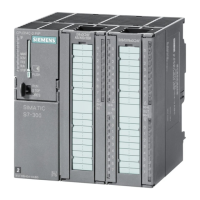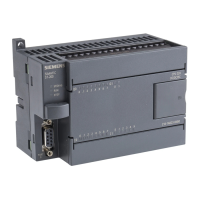PLC concepts
4.2 Accessing data
S7-200 SMART
System Manual, 09/2015, A5E03822230-AC
67
The local scope of L memory also affects symbol usage, when a global symbol and a local
symbol use the same name. If your program logic references that symbol name, the CPU
ignores the global symbol and processes the address assigned to the local memory symbol.
Note
Local memory value assignments are not always preserved for successive executions of a
POU
L memory addresses are reu
sed for the next execution sequence, after the current nested
sequence is completed. Depending on a POU's level in the execution stack and L memory
assignments made since a POU's last execution, a POU's L memory assignments made in a
previous execution may
be overwritten with unexpected values.
Remember to reassign the correct values to L memory variables, in your program logic.
Reinitialize all TEMP values before processing them and ensure that any output values
(OUT and IN_OUT) are correct.
The CPU converts an analog value (such as temperature or voltage) into a word-length (16-
bit) digital value. You access these values by the area identifier (AI), size of the data (W),
and the starting byte address. Since analog inputs are words and always start on even-
number bytes (such as 0, 2, or 4), you access them with even-number byte addresses (such
as AIW0, AIW2, or AIW4). Analog input values are read-only values.
Table 4- 14 Absolute addressing of AI memory
AIW
[starting byte address]
The CPU converts a word-length (16-bit) digital value into a current or voltage, proportional
to the digital value (such as for a current or voltage). You write these values by the area
identifier (AQ), size of the data (W), and the starting byte address. Since analog outputs are
words and always start on even-number bytes (such as 0, 2, or 4), you write them with even-
number byte addresses (such as AQW0, AQW2, or AQW4). Analog output values are write-
only values.
Table 4- 15 Absolute addressing of AQ memory
AQW
[starting byte address]

